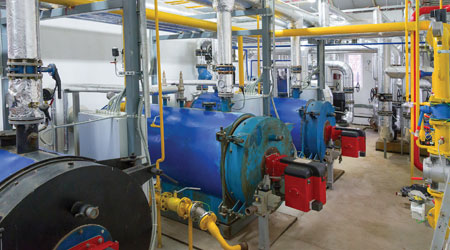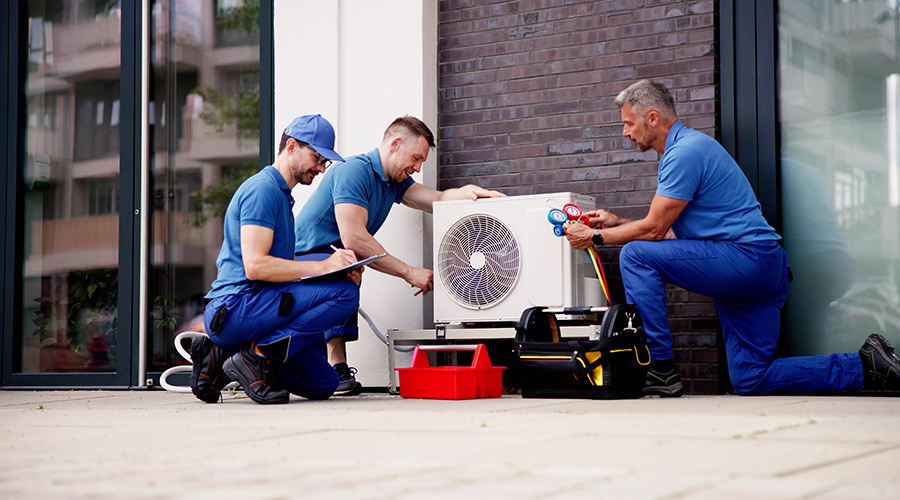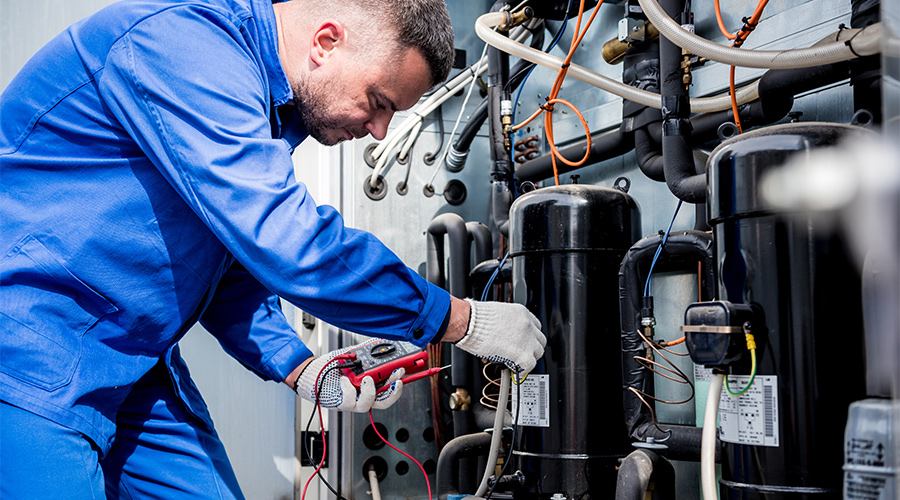Addressing Ventilation, Filtration, and Water System Concerns
Preventing in-building infections means carefully designing and monitoring ventilation and air filtration systems, as well as performing regular maintenance on a building's water system.
The design of the ventilation and air distribution systems is critical to minimizing the spread of infectious diseases as buildings continue to reopen. Improving indoor air quality (IAQ) has been a priority for managers as the pandemic continues.
The following verifications and potential modifications will serve to minimize the spread of any airborne pathogens:
Ventilation verification: ASHRAE recommends that all facilities follow ANSI/ASHRAE 62 in order to provide the acceptable IAQ for human occupants and minimize adverse health effects. Verification of compliance can be carried out as part of an engineering check or during retrocommissioning.
Ventilation optimization: Increasing the amount of fresh air beyond rates required by ANSI/ASHRAE 62 is one of the primary modifications many buildings are adopting to minimize the spread of airborne infections aerosols. However, increased ventilation air will mean increased energy use in order to heat and cool the fresh air being brought into the building. This increased demand may be cause for reevaluating the heating and cooling capacity and operation of the installed equipment.
Increased filtration: Another step managers can take is to increase the filtration level within existing HVAC systems. Filtration of outdoor air can not only mitigate the transmission of infections aerosols but can also be used to protect occupants during wildfire season, a major issue in many parts of the country. Similar to increasing the ventilation air, this measure has the potential to cause an increase to the energy use of the building. Existing air handling units will also require evaluation to determine whether additional filtration will fit within existing cabinets.
Ultraviolet germicidal irradiation may also be added to existing central air distribution systems as a mitigation method. This will not affect air or water flow within the building.
Increased operating hours for building flushout — running air handling units and terminal devices before tenants arrive, and after they leave, will help to flush the building and ensure the minimization of any airborne pathogens.
Water system maintenance
A building’s water system is one of the most likely locations for the growth of Legionella and for the potential of scaling/leaching. Upon reopening buildings, managers should take the following steps to minimize risks.
First, flush all service lines, hot water lines, and cold water lines. Run water through all points of use such as showers, faucets, toilets, drinking water, dishwashers and refrigerators/ice makers.
It’s also important to drain all water heaters and tanks. Clean and service all devices within the plumbing system per manufacturer’s instructions.
Consider doing a high temperature flush as a Legionella mitigation measure by filling the system, then re-checking water quality. If water quality is not within acceptable parameters after flushing and refilling the system, it may be necessary to flush the system with chlorine or other disinfectant.
After taking these initial steps, it’s important to continue ongoing maintenance by taking the following measures.
- Ensure that the hot water is stored at 140 degrees to minimize Legionella risk within the central system.
- Verify mixed water temperature leaving the central mixing valve.
- Ensure that the domestic water recirc pump is operating periodically to minimize stagnation of the hot water system.
Identifying and addressing hazards within existing buildings is paramount to the safety of building occupants post-pandemic. The recommendations above provide a starting point for ensuring a safe and productive return to the new normal as the world moves forward.
Patrick Strobridge, CPD, Principal, Mechanical Engineering for Stantec, has more than 17 years of experience in the design and construction industry. Jeff Lynch, PE, Senior Associate, Mechanical Engineering, has more than 20 years of experience in the architectural, engineering, and construction industries.
Related Topics:













